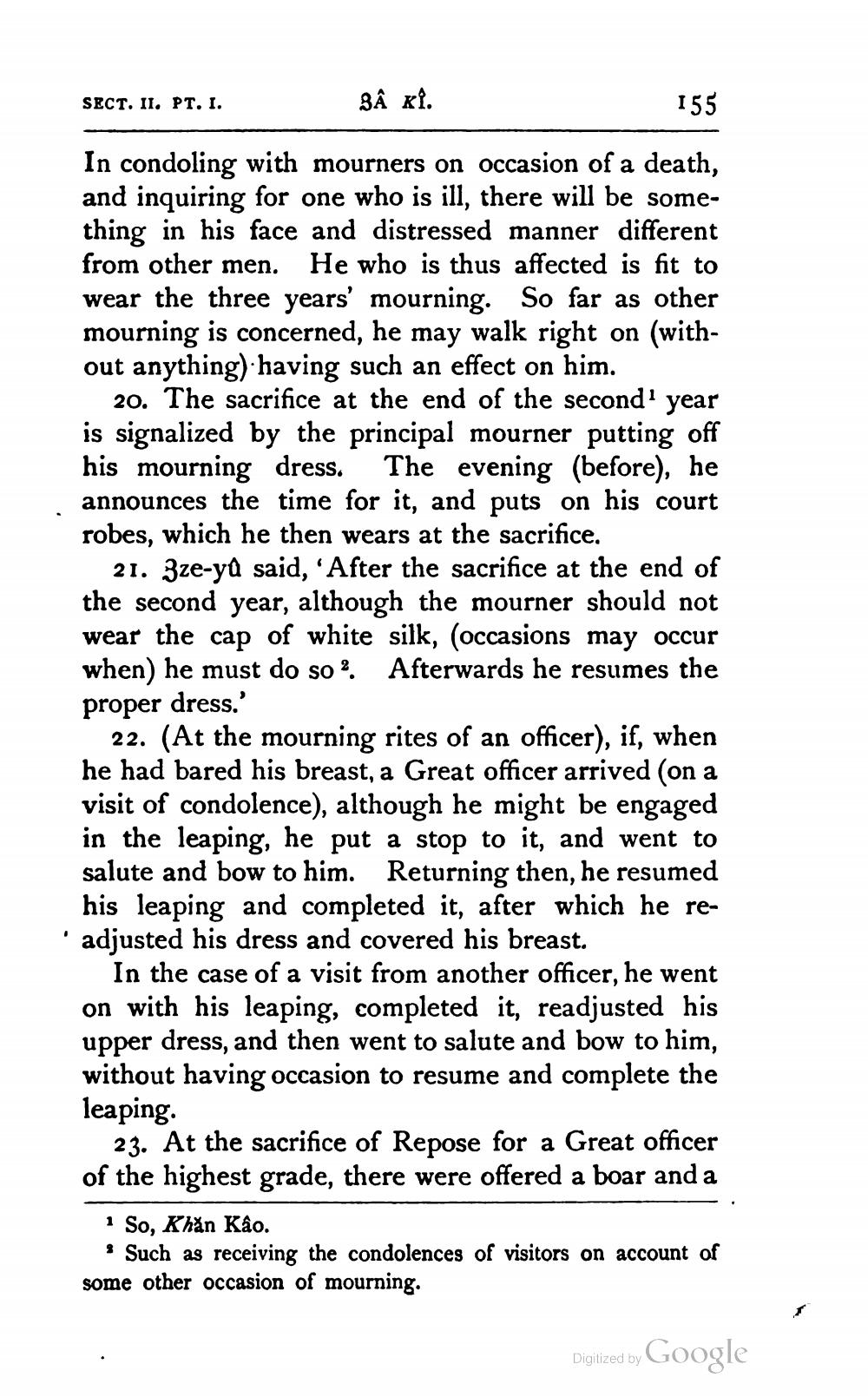________________
3â ki.
155
In condoling with mourners on occasion of a death, and inquiring for one who is ill, there will be something in his face and distressed manner different from other men. He who is thus affected is fit to wear the three years' mourning. So far as other mourning is concerned, he may walk right on (without anything) having such an effect on him.
20. The sacrifice at the end of the second1 year is signalized by the principal mourner putting off his mourning dress. The evening (before), he announces the time for it, and puts on his court robes, which he then wears at the sacrifice.
SECT. II. PT. I.
21. 3ze-yû said, 'After the sacrifice at the end of the second year, although the mourner should not wear the cap of white silk, (occasions may occur when) he must do so 2. Afterwards he resumes the proper dress.'
22. (At the mourning rites of an officer), if, when he had bared his breast, a Great officer arrived (on a visit of condolence), although he might be engaged in the leaping, he put a stop to it, and went to salute and bow to him. Returning then, he resumed his leaping and completed it, after which he readjusted his dress and covered his breast.
In the case of a visit from another officer, he went on with his leaping, completed it, readjusted his upper dress, and then went to salute and bow to him, without having occasion to resume and complete the leaping.
23. At the sacrifice of Repose for a Great officer of the highest grade, there were offered a boar and a
* So, Khăn Kâo.
Such as receiving the condolences of visitors on account of some other occasion of mourning.
Digitized by
Google




